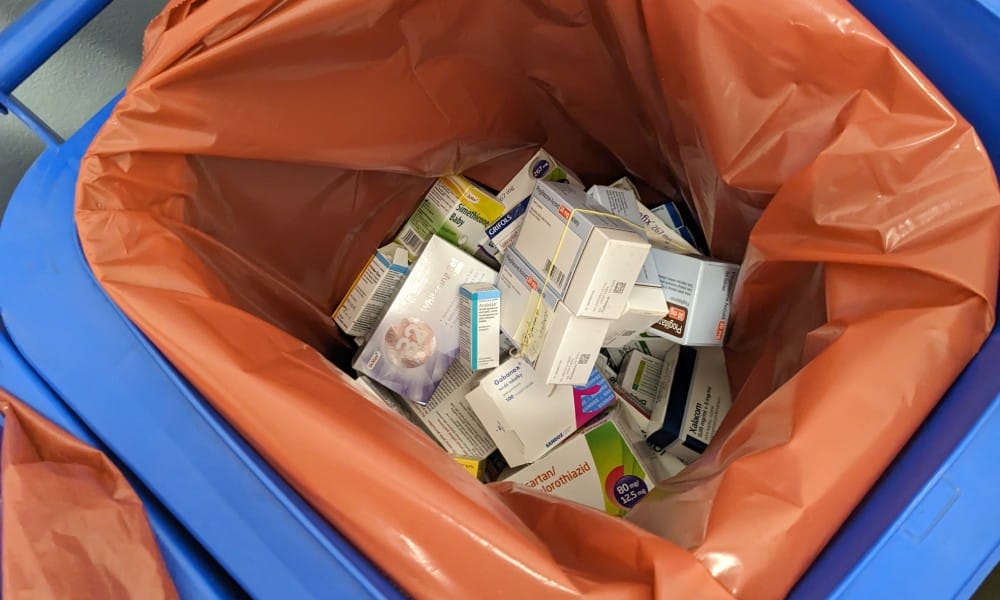Handling and disposing of hazardous pharmaceutical waste requires adherence to strict regulations. For healthcare facilities and pharmacies, knowing how to properly dispose of pharmaceutical hazardous waste is essential to protect the environment, ensure patient safety, and maintain regulatory compliance. Implementing safe and systematic disposal measures helps minimize risks associated with hazardous substances.
Understanding Hazardous Pharmaceutical Waste
Hazardous pharmaceutical waste typically includes unused medications, expired drugs, or contaminated pharmaceutical products. If disposed of improperly, these substances can severely harm the environment, particularly groundwater and soil. Beyond environmental concerns, exposure to such waste poses health risks to humans and animals alike.
Healthcare professionals and small business pharmacies must differentiate between hazardous and nonhazardous waste to ensure proper handling and compliance. For example, chemotherapy drugs like cyclophosphamide are considered dangerous and require special containment and disposal procedures under EPA guidelines.
Regulatory Compliance and Guidelines
Adhering to government-mandated guidelines is a nonnegotiable aspect of handling hazardous waste. The Environmental Protection Agency (EPA) in the United States outlines specific rules for the disposal of pharmaceuticals classified as dangerous. For example, facilities must follow the EPA’s Subpart P regulations, which prohibit flushing hazardous pharmaceuticals and require using designated containers for collection and disposal by certified waste handlers.
Understanding relevant legal requirements ensures healthcare professionals remain compliant and avoid potential penalties. Training staff to identify hazardous waste and implement proper processes is a critical first step in maintaining regulatory standards.
Best Practices for Safe Disposal in a Pharmacy Setting
Implementing best practices for disposing of hazardous drugs in a pharmacy environment safeguards human and environmental health. Start by segregating dangerous waste from nonhazardous waste immediately upon identification. Use labeled, approved containers for hazardous waste to ensure safe storage before disposal. Partner with certified dangerous waste management services that understand the specific needs of pharmaceuticals to ensure proper treatment.
Additionally, detailed records of waste disposal activities must be maintained for compliance audits, including types and quantities of hazardous waste removed. Regularly review and update disposal policies within the organization to align with evolving regulations and incorporate staff feedback.
The Risks of Improper Disposal Methods
Improper disposal of hazardous pharmaceuticals can lead to contamination of water systems, with serious environmental consequences. Flushing medications down the drain or disposing of them in municipal trash exposes communities to harmful chemicals. Such practices damage an organization’s credibility and violate legal requirements, potentially resulting in fines or lawsuits.
Proper disposal minimizes liability and demonstrates a pharmacy or healthcare facility’s commitment to environmental stewardship. By adopting and adhering to best practices, businesses protect themselves and contribute positively to their communities.
Moving Forward With Safe Waste Management
Healthcare professionals and small businesses are critical to the safe disposal of hazardous pharmaceutical waste. Understanding regulatory requirements, implementing structured disposal processes, and working with licensed waste management providers contribute to building a safer and more sustainable environment. When safety and compliance are priorities, businesses meet legal obligations and uphold their reputations as responsible healthcare providers.
Promoting an organizational culture of accountability ensures every team member is vigilant about hazardous waste management. By refining internal processes and staying informed about industry standards, businesses can stay ahead and maintain ethical disposal techniques.







